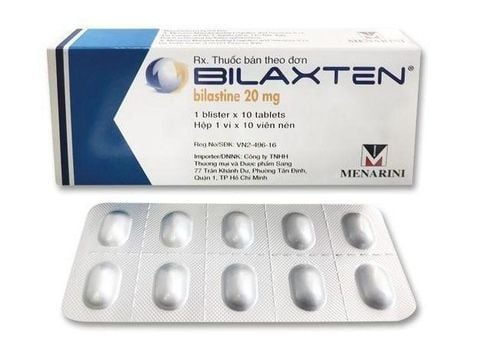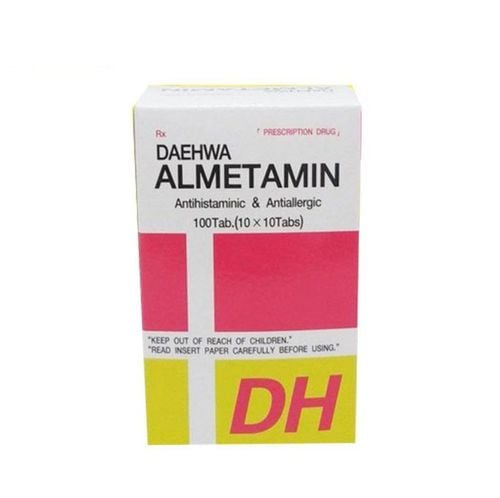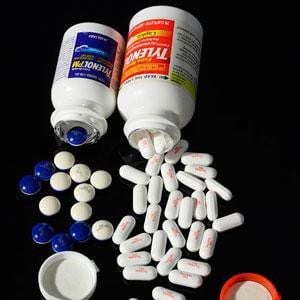Asumalife is primarily composed of Ketotifen at a dosage of 1 mg, classified as a Histamine H1 receptor antagonist. It is commonly utilized in the treatment of symptoms associated with bronchial asthma, allergic rhinitis, and various other allergic conditions. Understanding comprehensive information such as composition, therapeutic indications, contraindications, dosage, and potential adverse effects of Asumalife will enhance treatment efficacy for patients and their families.
1. What is Asumalife?
Asumalife is available in the market in two main formulations: tablet and syrup (for children). However, this discussion will focus on the tablet form, which is more widely used in Vietnam.
Asumalife is formulated as a tablet with the following key components:
- Active ingredient: Ketotifen (Ketotifen fumarate) at a dosage of 1 mg.
- Excipients: Sufficient to constitute one 1 mg tablet.
Ketotifen fumarate exhibits selective inhibition of H1 histamine receptors and serves as a stabilizer for mast cells.
Ketotifen fumarate predominantly acts on the respiratory system, thus it is applied as a treatment for bronchial asthma. However, it does not alleviate acute asthma episodes since it does not induce bronchodilation; instead, it provides anti-allergic effects by inhibiting the release of mediators responsible for allergic responses from mast cells and inflammatory mediators such as Histamine, Leukotrienes C4 and D4 (slow-reacting substance of anaphylaxis), and platelet-activating factor (PAF).
Specifically, Ketotifen fumarate simultaneously inhibits H1 histamine receptors and phosphodiesterase enzymes, leading to increased levels of cyclic adenosine monophosphate (cAMP) in mast cells, inhibiting platelet activation due to PAF, and preventing the migration of eosinophils to inflammatory sites.
2. What are the therapeutic indications of Asumalife?
Asumalife is indicated in the following clinical scenarios:
- Prevention of symptoms associated with bronchial asthma and allergic bronchitis.
- Adjuvant therapy in conjunction with standard asthma medications.
- Chronic urticaria of unknown etiology.
- Allergic conjunctivitis.
- Allergic rhinopathy.
- Atopic dermatitis.
- Food allergies and pollen allergies.
- Side effects related to antihistamine medications.
Conversely, Asumalife is contraindicated in the following circumstances:
- Hypersensitivity to any component of Asumalife.
- A history of hypersensitivity to other medications containing Ketotifen fumarate.
- A history of hypersensitivity to other histamine receptor antagonists.
- Pregnant women in the first trimester or lactating women.
- Patients with a history or active seizure disorders.
3. Dosage and administration of Asumalife
Dosage
Adults:
- Initial dosing (first 3–4 days): One tablet (1 mg) taken once daily with the evening meal.
- Subsequent dosing: One tablet (1 mg) taken twice daily with meals, once during breakfast and once during dinner.
- Dose escalation: Two tablets (2 mg) taken twice daily with meals, once during breakfast and once during dinner.
Children:
- Children aged 3 years and older: One tablet (1 mg) taken twice daily with meals, once during breakfast and once during dinner.
- Children aged 6 months to less than 3 years: Use of the tablet form is not recommended. Syrup formulation is advised at a dosage of 0.5 mg taken twice daily.
- Children under 6 months: Use is not recommended.
4. Adverse effects associated with Asumalife
The use of Asumalife at high dosages or for prolonged durations may lead to the following adverse effects:
- Common: Drowsiness, fatigue, dizziness, and lightheadedness.
- Less common: Central nervous system irritability, insomnia, restlessness, and irritability.
- Rare: Hematological abnormalities such as leukopenia, agranulocytosis, hemolytic anemia, and thrombocytopenia.
- Unknown frequency: Cardiovascular symptoms like palpitations and arrhythmias. Dermatological symptoms include skin rash, urticaria, Stevens-Johnson syndrome, and erythema multiforme. Other symptoms such as hepatitis, cystitis, increased appetite and weight gain, headaches, xerostomia, cognitive impairment, increased bronchial secretions, constipation, gastroesophageal reflux, urinary retention or difficulty, seizures, sweating, myalgia, tremors, sleep disturbances, extrapyramidal effects, tinnitus, hair loss, depression, and hypotension.
It is advisable to discontinue Asumalife upon the onset of any adverse effects or other unusual symptoms following administration, and to notify the treating physician regarding the use of Asumalife or to seek immediate medical attention for prompt management.
5. Precautions for the use of Asumalife in specific populations
- Caution should be exercised when administering Asumalife to patients with a history of or currently experiencing seizures, epilepsy, idiopathic thrombocytopenic purpura, or to patients with adrenal insufficiency who are undergoing treatment with corticosteroids.
- Asumalife should be avoided in children under 6 months of age, as safety studies regarding its use in this population are limited.
- Pregnant women: Current data regarding the harmful effects of Ketotifen fumarate, a component of Asumalife, during pregnancy is relatively scarce. As such, Asumalife should only be utilized in this demographic when absolutely necessary.
- Lactating women: Some research indicates that Ketotifen fumarate may pass into breast milk. Therefore, breastfeeding should be discontinued if the decision is made to use Ketotifen fumarate.
- Individuals who operate vehicles or machinery are less likely to experience side effects such as drowsiness, deep sleep, fatigue, dizziness, or visual disturbances following the administration of Asumalife.
6. Drug interactions with Asumalife
Interaction with other medications
- Do not abruptly discontinue medications used for the treatment of asthma, such as corticosteroids, xanthine derivatives, β2 agonists, or sodium cromoglycate, upon initiating therapy with Asumalife.
- Asumalife has been shown to enhance the sedative effects of central nervous system depressants, including barbiturates, opioid analgesics, muscle relaxants, antiepileptics, anxiolytics, and alcohol.
- Asumalife may potentiate the antimuscarinic effects of atropine, tricyclic antidepressants, and monoamine oxidase inhibitors (MAOIs).
- Asumalife can mask the side effects of aminoglycoside antibiotics.
- It is advised to avoid the concomitant use of Asumalife with oral antidiabetic medications, as this may result in a temporary increase in thrombocytopenia.
The above information outlines the basic components, uses, dosages, and precautions associated with the use of Asumalife. Patients and their relatives should carefully read the product information for Asumalife and strictly adhere to the recommendations provided by healthcare professionals to achieve optimal therapeutic outcomes.
For additional health, nutrition, and beauty information to safeguard the well-being of yourself and your loved ones, please refer to the Vinmec International General Hospital website.
To arrange an appointment, please call HOTLINE or make your reservation directly HERE. You may also download the MyVinmec app to schedule appointments faster and manage your reservations more conveniently.








